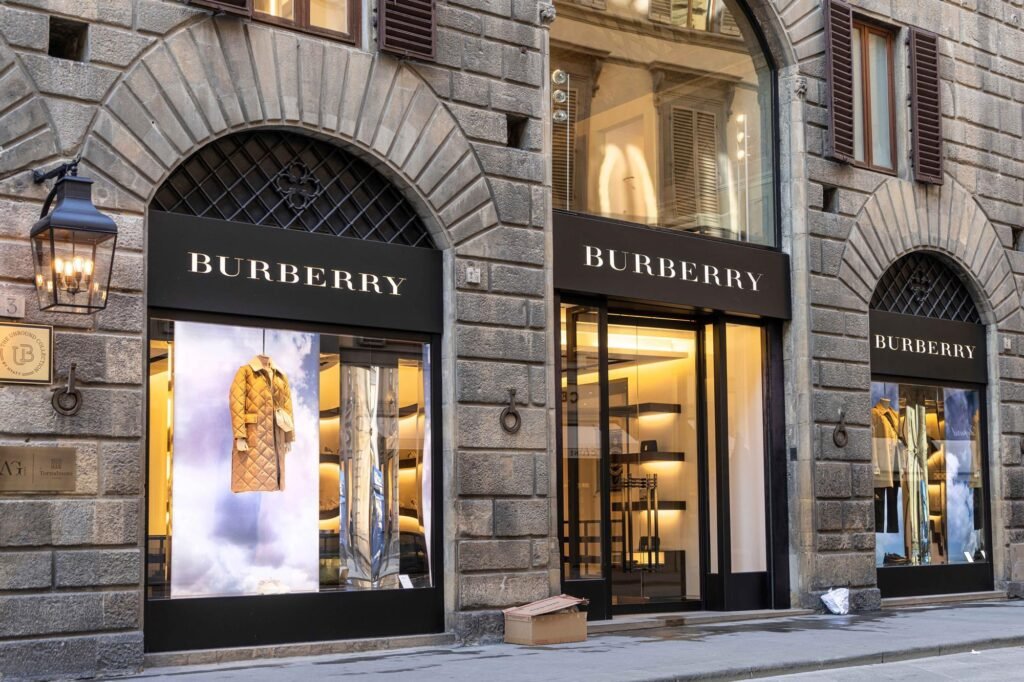Burberry Sales Improvement is at the center of recent headlines as the iconic British fashion brand begins to see real results from its well-planned turnaround strategy. After several quarters of decline and uncertainty, Burberry’s latest earnings report offers a much-needed dose of optimism.
With a renewed brand vision, smarter product strategy, and deeper digital investment, the company is signaling that its comeback is underway. Let’s explore what went wrong, what has changed, and what the future holds for this luxury fashion house.
Why Burberry Struggled in Recent Years
Despite its rich history and iconic branding, Burberry faced significant headwinds over the past few years. Challenges that led to its recent decline include:
- Sales declines in major markets like China and the U.S.
- Confusing brand positioning against more dominant luxury houses
- Leadership changes that stalled creative progress
- Supply chain disruptions and sluggish recovery post-pandemic
These issues led to falling investor confidence and a growing perception that Burberry was losing its competitive edge.
What’s Behind the Burberry Sales Improvement?
The recent Burberry sales improvement can be traced directly to a focused turnaround strategy launched under CEO Jonathan Akeroyd, who joined the company in 2022. His goal: restore Burberry to the top tier of global luxury brands.
Key Elements of the Turnaround Strategy:
1. Reclaiming British Identity
Burberry leaned into its heritage, reviving the Equestrian Knight logo and emphasizing its British craftsmanship. The brand returned to what made it iconic — from tailored trench coats to timeless check patterns.
2. New Creative Leadership
Akeroyd hired Daniel Lee as the new creative director. Known for transforming Bottega Veneta into a fashion powerhouse, Lee introduced bolder, more luxurious designs with British influences, rejuvenating the product line.
3. Elevating Luxury Appeal
Instead of competing on price, Burberry increased its focus on high-end luxury, offering limited collections, exclusive releases, and redesigned accessories. This helped to attract affluent consumers seeking exclusivity.
4. Modernizing Retail & Digital Experience
The company invested in:
- Upgrading its flagship stores
- Offering immersive in-store experiences
- Expanding its e-commerce footprint
- Launching mobile-first campaigns and influencer collaborations
These efforts helped Burberry meet the modern consumer where they shop — online and globally.
Quarterly Results Highlight Burberry Sales Improvement
Burberry’s Q1 report for FY2025 was the first real sign that these changes are working.
Highlights:
- Comparable store sales up by 5% globally
- Mainland China saw double-digit growth
- Digital and e-commerce sales rose significantly
- Inventory management improved, increasing profit margins
These numbers confirm that the Burberry sales improvement isn’t just a short-term spike — it’s a result of structured changes to branding, operations, and product.
CEO Jonathan Akeroyd Speaks on Strategy Success
“We are encouraged by the positive customer response to our new collections and store experiences. While there is more work ahead, we are confident in our strategic direction.”
— Jonathan Akeroyd, Burberry CEO
His message reflects confidence in the brand’s long-term path, supported by clearer positioning and stronger creative leadership.
How Daniel Lee is Shaping the New Burberry
Daniel Lee has been pivotal in changing how Burberry is seen by both fashion insiders and mainstream consumers. His work includes:
- Fresh trench coat designs with luxe details
- Sleek leather accessories like the new “Knight” bag
- A sophisticated color palette that leans into rich tones
- Editorial campaigns shot with young British talent
These updates have been well-received, especially among Gen Z and millennial consumers, helping drive Burberry sales improvement.
Market and Consumer Response
The fashion world and retail analysts have responded positively:
- Fashion media is praising Burberry’s “return to form”
- Social media engagement has spiked, especially after runway shows
- Analysts have adjusted earnings projections upward
- Consumer sentiment in key markets like China and the UK has improved
Burberry’s Sales Improvement in Key Markets

📍 China
Burberry experienced a strong bounce-back in China following the lifting of COVID restrictions. Local marketing campaigns and limited-edition product drops have helped rekindle interest in the brand.
📍 United States
While still a challenging market, there are early signs of stabilization. Burberry plans to localize product offerings and refresh retail formats to connect better with American luxury consumers.
📍 Europe & UK
Home market sentiment has improved. The brand’s renewed British identity has resonated well, especially among older, loyal customers.
Challenges Ahead for Burberry
Despite positive progress, Burberry must navigate several ongoing challenges:
1. Luxury Market Volatility
Economic slowdowns in Europe and the US may limit discretionary spending. Burberry must maintain appeal during uncertain conditions.
2. Stiff Competition
LVMH, Hermès, and Kering continue to dominate. Burberry must carve out a niche rather than chase the same customer profiles.
3. Brand Consistency
Maintaining a consistent identity across stores, products, and online platforms is critical as Burberry scales its improvements globally.
Looking Forward: Burberry’s Road to Sustainable Growth
The Burberry sales improvement we’re seeing today is just the beginning. Going forward, the brand is focused on:
- New product launches that stay true to its heritage
- Expanding direct-to-consumer (DTC) sales
- Strengthening presence in Asia-Pacific, especially South Korea and Japan
- Exclusive collaborations with artists, models, and musicians
If executed well, Burberry can return to being not just a luxury fashion house, but a cultural icon in the global style conversation.
Conclusion: A Turning Point for Burberry
The latest figures are more than just numbers — they are evidence of Burberry’s successful transition from a struggling heritage brand to a modern luxury powerhouse.
Through clear leadership, a renewed creative vision, and customer-focused innovation, Burberry sales improvement marks the start of a genuine brand revival.
Read Next – FedEx Technology Chief Departs After Internal Probe Into Unit He Oversaw






